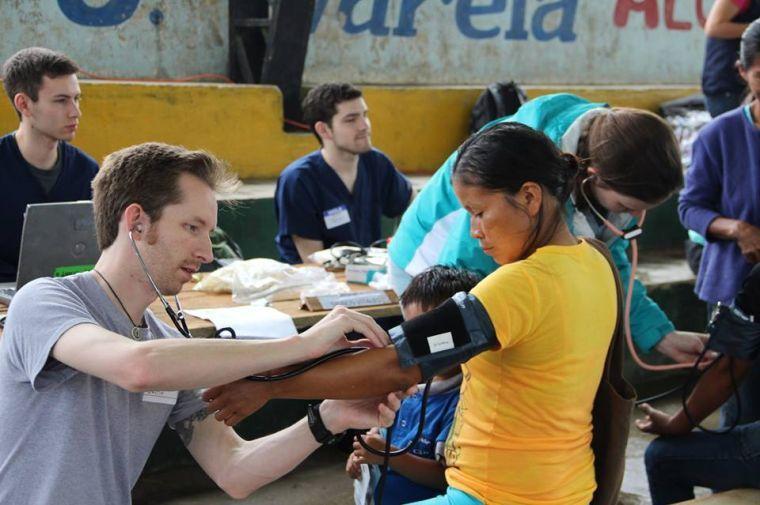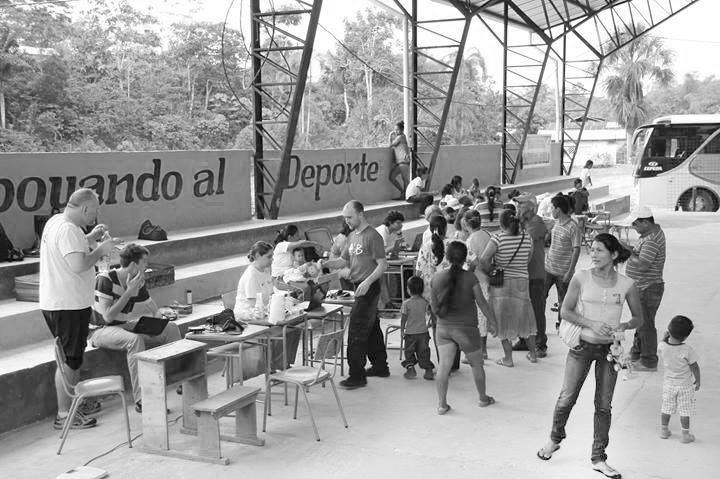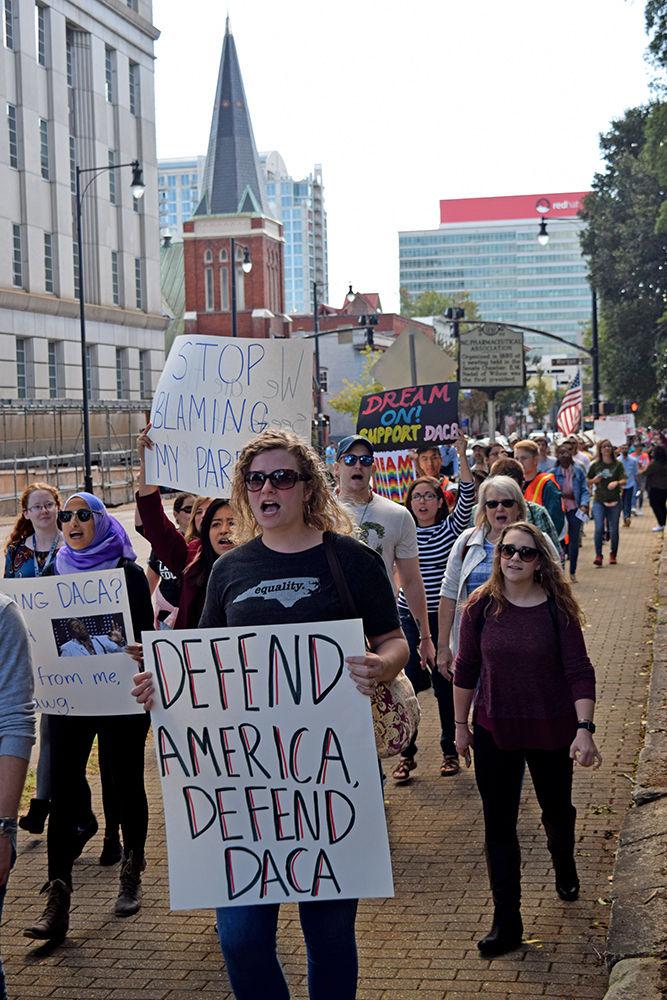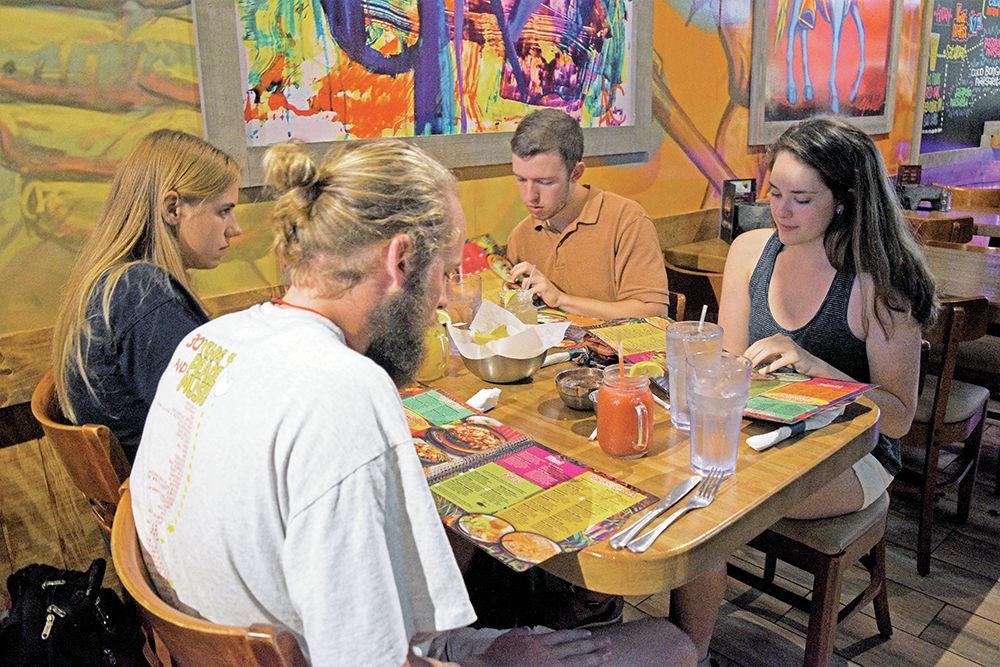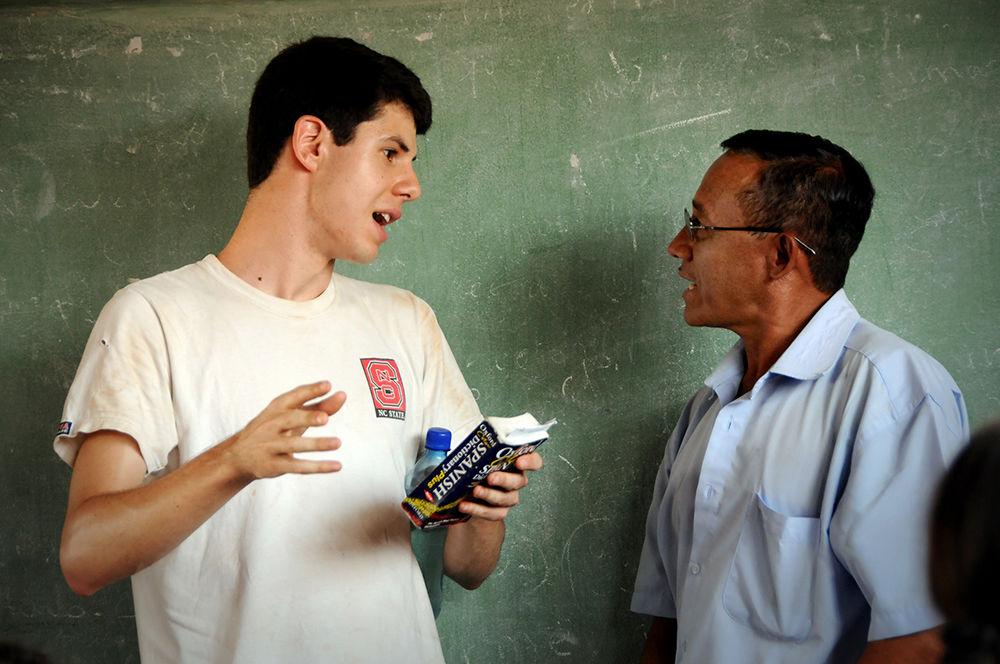In the soft morning light, they climbed into charter buses, lugging their medical supplies.
The one-way dirt road stretched off into the jungle ahead of the buses that carried the students and staff from their hotel by the Napo River to their clinic site location for the day. 40 minutes of painstakingly slow driving through dense forest led them past small shacks and the homes of the people who would walk hours to see the team for medical care.
The Alternative Service Break group, in partnership with Timmy Global Health and a team of medical professionals, worked in rotating daily clinics to provide direct healthcare to rural communities in Ecuador that lacked frequent access.
The participants from N.C. State will be one of many groups that provide monthly clinics to the region through TGH.
The team was made up of adviser Justine Hollingshead, 14 students from N.C. State, four paramedics from Cary and three medical providers from Raleigh, including Dr. Kasani, who teaches a global health class at N.C. State.
For Dr. Kasani, who practiced medicine at John Hopkins Hospital for 18 years, this trip would be her first experience with direct patient care since 2001.
According to Adam Cully, assistant director of the CSLEPS, there are currently about 20 trips that students can choose to participate in that cover topics such as social justice, housing, world hunger, poverty, global health, water safety and education. Trips can take place in fall, winter and spring, and can take place within the United States as well as abroad, working to partner with an organization already working within the community.
This was the third ASB trip for Enioluwafe Ojo, a junior in human biology and one of two team leaders. Compared to her experiences working with an environmental team in Costa Rica and another public health team in a more urban city of Ecuador, the trip to Chonta Punta was distinct. It took about five to six hours by bus from the capital city of Quito to get to the Napo province, and each local community they visited was another hour from where they stayed.
“It was definitely more isolated,” Ojo said.
Thomas Woo, a junior in human biology, found his first night in the jungle the most challenging of the trip.
“I just remember showing up there the first night and thinking ‘oh god, what have I gotten myself into?’ It was like nothing I had ever experienced before here in the States,” said Woo.
Despite its challenges, the trip was rewarding for Woo, who said he hopes to go to medical school after he graduates.
“I took away a greater understanding of the health challenges and disparities from an international perspective,” Woo said, noting that the trip also opened his eyes to the health disparities and inequalities in the US.
During the day, the only source of relief from the intense heat was the frequent rainstorms, which cleared the heavy air and left behind a fresh, crisp smell.
When the day at the clinic ended in the late afternoon, the team would head back to the hotel, located within sight of the Napo River.
“Sometimes if we had time after clinic, we would go swim,” Ojo said.
What Kasani treasured about the trip was the incredible spirit of the team. Despite language barriers and long days, the members of the group became tight-knit as they worked with one another.
“Because the students were so motivated and enthusiastic, it made it easy for me to be happy even if I felt a little down. Everybody was so upbeat that it was hard to be upset about anything,” Kasani said.
During their one day off, half the team went white water rafting more than 26 miles down the Napo River, while the other half explored the nearest large town.
“I don’t think there’s too many times you can say you floated in a canoe on the Amazon going to a health clinic,” Kasani said with a laugh.
“It didn’t seem like work, rafting on the Amazon.”
Medical practitioners, translators, and team members are seen working with patients as they receive basic medical care. The team is in partnership with Timmy Global Health, working in daily clinics that visit various villages in the Napo Province.


